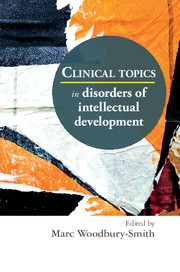Book contents
- Frontmatter
- Contents
- List of contributors
- Foreword
- Preface
- Part 1 Disorders of intellectual development: concept and epidemiology
- Part 2 Disorders of intellectual development: comorbidity and complications
- Part 3 Autism spectrum disorder
- 8 Overview of autism spectrum disorder
- 9 Autism spectrum disorder and Asperger syndrome
- 10 Pharmacological management of core and comorbid symptoms in autism spectrum disorder
- 11 Psychological treatment of autism spectrum disorder
- Part 4 Service provision
- Index
8 - Overview of autism spectrum disorder
from Part 3 - Autism spectrum disorder
Published online by Cambridge University Press: 01 January 2018
- Frontmatter
- Contents
- List of contributors
- Foreword
- Preface
- Part 1 Disorders of intellectual development: concept and epidemiology
- Part 2 Disorders of intellectual development: comorbidity and complications
- Part 3 Autism spectrum disorder
- 8 Overview of autism spectrum disorder
- 9 Autism spectrum disorder and Asperger syndrome
- 10 Pharmacological management of core and comorbid symptoms in autism spectrum disorder
- 11 Psychological treatment of autism spectrum disorder
- Part 4 Service provision
- Index
Summary
In a classic paper published in 1943, Dr Leo Kanner introduced autism as a distinct disorder by noting
‘there have come to our attention a number of children whose condition differs so markedly and uniquely from anything reported so far, that each case merits – and I hope will eventually receive – a detailed consideration of its fascinating peculiarities.’ (See Kanner, 1968: p. 217)
Around the same time, in an independent report, Dr Hans Asperger published a paper in German describing a form of autism that later became known as Asperger syndrome (Asperger, 1944). Those two landmark papers represent, to this date, the foundation for the clinical presentation of autism spectrum disorder (ASD). ASD is a neurodevelopmental disorder with marked impairments in social communication and a pattern of restricted/repetitive behaviours.
Although age of ASD diagnosis differs across localities and services, nowadays most cases are identified during early childhood. Based on both scientific and empirical evidence, there is now a consensus that ASD is a rather complex, heterogeneous disorder with a clinical presentation that appears to change with development over the life span. Although, in general, individuals with ASD exhibit similar symptoms and behaviours, there is substantial variability in terms of symptom onset, severity, manifestation and configuration.
This chapter provides a brief overview of the prevalence and aetiology of ASD, as well as issues related to the diagnosis and classification of the disorder within the context of the newly published version of the Diagnostic and Statistical Manual of Mental Disorders, DSM-5 (American Psychiatric Association, 2013). The chapter also highlights the potential benefits of moving towards a more balanced nosology of ASD that addresses the need for both clinical and research utility.
Prevalence rates
Despite the fact that an experienced clinician can (in most cases) reliably assign an ASD diagnosis to a child as young as 2 years of age, the majority of children do not receive a final, formal diagnosis until 3–4 years of age (Lord et al, 2006).
ASD is reported to occur in all ethnic and socioeconomic groups (Baio, 2012) and recent epidemiological studies suggest a dramatic increase in its prevalence (i.e. the number of cases in a defined group of children at a specific point in time).
- Type
- Chapter
- Information
- Clinical Topics in Disorders of Intellectual Development , pp. 147 - 158Publisher: Royal College of PsychiatristsPrint publication year: 2015

